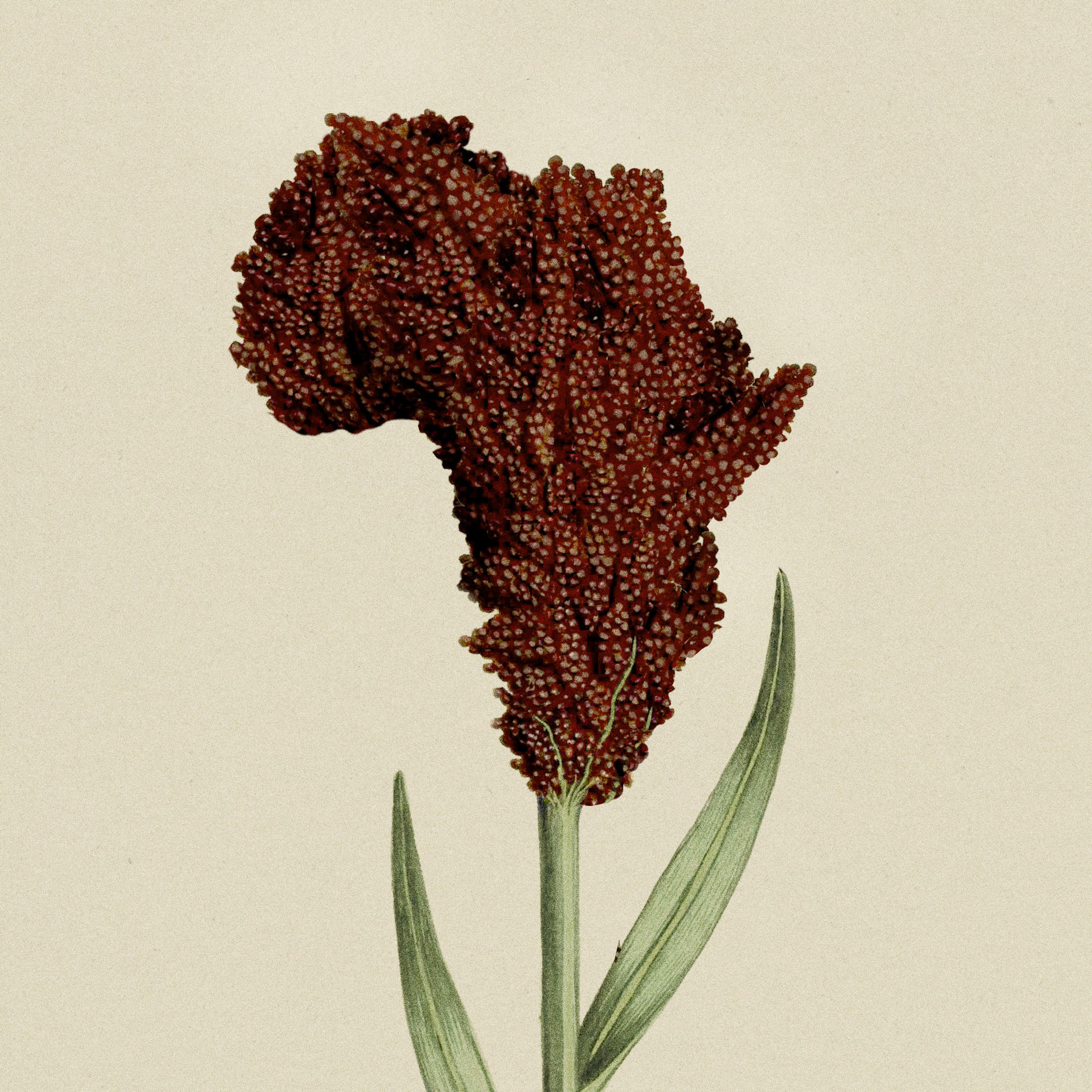We produce almost 10 million metric tons of this commodity grain each year. With the Chinese export market collapsing, some growers are eyeing the African continent.
John Duff has watched the global sorghum market for decades, but he has never seen American farmers in a bind like this.
At the start of September, he noted that producers across the Great Plains were holding more than 200 million bushels of unsold sorghum, grain piling up in bins and elevators with nowhere to go. The cause is the trade war with China that cut off access to a market that purchased 1.2 billion dollars‘ worth of American sorghum just the previous year.
For U.S. farmers who planted their fields counting on that demand, the result has been devastating.
Duff, chairman of Sero Ag Strategies and former executive vice president of the National Sorghum Producers, wrote in a blog post that what is happening at the moment is much worse than Trump’s last trade war. “We haven’t seen a picture this dire since the Chinese investigation of U.S. sorghum farmers in 2018-2019. Today is worse.”
The crisis has left Kansas sorghum farmers scrambling for alternative buyers. But behind this emergency lies a more complex story that involves the collapse of traditional export markets, the fragility of agricultural trade policy, and an unexpected opportunity emerging in sub-Saharan Africa that could reshape American farming for years to come.
China’s withdrawal from the sorghum market, driven by escalating tariffs and political tensions, has exposed how vulnerable American producers are to geopolitical instability. This is happening against a backdrop where sub-Saharan Africa faces a severe food crisis. More than 178 million people are experiencing food insecurity, and grain demand is projected to grow by 2.2 percent each year, while local production increases at only 1.6 percent.
The convergence of these challenges, American oversupply and African need, has created what agricultural economists describe as a rare opportunity to rebuild trade relationships.
Yet taking advantage of it will require navigating trade barriers, restoring international aid programs that have been weakened by budget cuts, and persuading wary African governments to open their markets.
The China Problem
The roots of the current crisis run deep. For years, China served as the anchor market for U.S. sorghum exports, providing the kind of reliable, high-volume demand that allowed American farmers to make their planting decisions with confidence. But when the Trump administration’s renewed trade war with China escalated this year, sorghum came under fire. The subsequent tariffs all but shuttered a $1B+ annual market, stoking U.S. agricultural tensions.
William Ridley, associate professor of agricultural and consumer economics at the University of Illinois, Urbana-Champaign, who researches international trade, explained the situation saying, “the elephant in the room remains the potential loss of the Chinese export market.” He added that if trade tensions with China were resolved and grain exports were to resume as before, that that would go a long way “to boost sorghum’s continued viability as a major export commodity.”
In October, Trump’s meeting with President Xi then enabled the first sorghum shipment there since the trade war peaked.
Unlike wheat or corn, where domestic demand provides a cushion, U.S. sorghum producers are heavily dependent on exports, making them especially vulnerable when international markets shut down. The impact on farm economics has been immediate and severe. Basis levels, the price difference between local cash prices and futures contracts, collapsed as oversupply flooded local markets.
Farmers who had locked in production costs based on expected Chinese demand are now finding themselves in a financial crisis. Storage facilities are additionally beginning to fill up beyond capacity.
The convergence of these challenges has created what agricultural economists describe as a rare opportunity to rebuild trade relationships.
Farmers need to move this grain, Duff explained, noting that “expanded food aid moves inventory quickly, because USDA and USAID purchase U.S.-grown commodities in truck- and vessel-scale lots and deliver them on fixed timetables.” But with international aid programs under political duress, that safety valve has become less reliable.
The Food for Peace initiative, a seven-decade-old program that purchased American grain to feed hungry populations abroad, had long provided a steady, if modest, revenue stream for U.S. farmers. But when the Trump administration’s Department of Government Efficiency (DOGE) targeted foreign aid for cuts, Food for Peace landed on the chopping block. The Republican-controlled House initially passed legislation to abolish the program entirely.
The move triggered panic among farm-state representatives, who suddenly realized their constituents were about to lose one of their few remaining export outlets. Media coverage amplified the alarm, with The New York Times reporting on Kansas farmers who had lost Food for Peace contracts and were exploring dog food production as an alternative market for their grain.
Facing constituent pressure and media scrutiny, Congress amended its approach, preserving some food aid programs while transferring others from USAID to the USDA. By September, the USDA announced it would invest $480 million through programs like McGovern-Dole Food for Education to purchase commodities for school meals and nutrition projects in countries including Benin, Mozambique, and Senegal. A separate announcement indicated plans to spend more than $2 billion on grain purchases for international food aid across sub-Saharan Africa and elsewhere.
For sorghum farmers, these purchases offer immediate relief, clearing bin space and stabilizing prices ahead of the next harvest. But aid alone cannot solve the structural problem. What American sorghum farmers need is sustainable commercial markets, the kind that food aid programs can open but not replace.
The African Opportunity
Sub-Saharan Africa imports significant quantities of grain to supplement local production that can’t keep pace with population growth. Sorghum is especially valued there, not as animal feed, as it’s often used in the United States, but as an ingredient deeply woven into local cuisines.
In Ethiopia, it is the base for injera and other traditional dishes. Across West Africa, it is processed into porridge and beer. The World Food Programme (WFP) distributed more than 772,000 tons of American-grown sorghum valued at nearly $400 million between 2020 and 2025 in Chad, Ethiopia, Nigeria, Somalia, South Sudan, and Sudan.
“Sorghum is a culturally accepted and widely consumed staple [in Ethiopia],” Claire Nevill, spokesperson at WFP Ethiopia, said. And “red sorghum enhances the bioavailability of iron and zinc, two minerals often deficient in communities where WFP works,” according to Djaounsede Madjiangar, spokesperson at WFP West Africa.
East Africa, representing up to 10 countries, has been the third-largest destination for U.S. sorghum since 2014, behind only China and Mexico. Nigeria imported $10 million worth of U.S. sorghum in 2023, its largest amount from any country, making the United States its fastest-growing sorghum supplier. The potential for expansion now seems obvious, as Africa needs grain and American farmers need markets. But turning humanitarian food aid into commercial trade relationships has proved extraordinarily difficult.
In Nigeria, high import duties and foreign exchange controls make grain imports both expensive and bureaucratically complex. Ethiopia imposes tight controls on foreign exchange allocation and requires high collateral for commodity-related imports, according to Samson Tizazu, an international trade advisor at Proma Partners PLC who works regularly with banks and commodity importers.
Sorghum is especially valued there, not as animal feed, as it’s often used in the United States, but as an ingredient deeply woven into local cuisines.
The barriers reflect more than protectionism. Muhammed Waziri, senior lecturer of botany at the University of Maiduguri in Nigeria, told Offrange that Nigeria has “the land, talent, and manpower to produce food grains to meet all our local needs.”
“If the intentions are genuine, I believe we can cover this production gap, if not entirely, at least reduce importation to the barest minimum with Nigeria’s capacity.“
During the Goodluck Jonathan administration in Nigeria from 2010 to 2015, Waziri recalled, “there was a famous and widespread campaign that we should be substituting wheat bread with cassava bread. This campaign gathered a lot of attention.”
The politically driven push made it “economically unfavorable for even local farmers to produce wheat, causing them to switch focus to sorghum and other staples that were more in demand.”
Yet despite these aspirations, African production continues to fall short. Grain production in sub-Saharan Africa is projected to grow at only 1.6% annually, while demand is expected to reach 2.2% annually due to population growth. Climate change, drought, violence, and economic troubles continue to undermine local agricultural efforts.
“For now, we cannot talk of stopping importation, because doing so would compound the issues,” Waziri acknowledged. “The best thing for Nigeria to do is to make a plan. The government should have a plan to reduce the rate of importation while encouraging increased local production.”
What U.S. Farmers Need to Compete
Ridley believes Africa represents a critical opportunity for American sorghum producers, “if the United States can negotiate access.”
“Market development and securing more favorable market access such as Nigeria are key for making sorghum a viable export commodity, particularly as exports to China have fallen off a cliff,” Ridley said. “Consequently, I strongly recommend pursuing trade agreements to open the doors for U.S. commodities such as sorghum and other products.”
But he’s not optimistic about the current trajectory.
“As far as accessing new export markets in Asia and Africa, U.S. sorghum has its work cut out for it. Such countries typically have high barriers to agricultural imports, either in the form of high tariffs or quantitative restrictions that severely restrict the volume of imports.”
“As far as accessing new export markets in Asia and Africa, U.S. sorghum has its work cut out for it.“
Worse, he added, “the United States has mostly sat on the sidelines when it comes to establishing new [agricultural] trade agreements. The last big one was the US-Japan Trade Agreement of 2019.”
The USDA announced in September that it plans to pursue commodity purchases that would “remove trade barriers and ensure market access for U.S. agricultural exports in Ethiopia, Kenya, and Nigeria, among others.” But the context surrounding that announcement complicates the mission. The United States allowed the African Growth and Opportunity Act (AGOA), which provided duty-free access to U.S. markets for thousands of products from selected sub-Saharan African countries, to expire without renewal in September. At the same time, the U.S. imposed high tariffs — 10% on Kenya, 15% on Nigeria.
African leaders have responded by signaling renewed interest in the African Continental Free Trade Area (AfCFTA), an intra-regional free trade agreement that would prioritize trade within the continent, potentially at the expense of American agricultural exports.
Beyond Trade Policy
Duff identified another domestic priority in the U.S.: “Finalizing year-round E15 access and clarifying regulations on it.”
E15, gasoline consisting of up to 15% ethanol and 85% petroleum, currently faces seasonal restrictions due to air quality concerns.
Year-round availability would allow ethanol plants that use sorghum to “operate consistently and support local prices,” Duff explained, providing a domestic demand floor that would make export market volatility less devastating.
The ethanol angle matters more than it might seem. As biofuel mandates have evolved, sorghum has become an increasingly important feedstock for ethanol production, offering farmers a domestic market that does not depend on the whims of foreign governments.
Strengthening that domestic foundation would give producers more leverage in international negotiations and the security to walk away from unfavorable trade terms, because they have alternatives at home.
Strengthening that domestic foundation would give producers more leverage in international negotiations.
Moreover, if American sorghum is going to compete successfully in African markets, it will need to offer superior quality and specific characteristics tailored to African needs and conditions.
Gunvant Patil, associate professor of plant genomics and soil sciences at Texas Tech University, argues that genomics and seed quality improvements should be the priority.
“The U.S. sorghum community should prioritize high-performing hybrids that combine early maturity with improved seed composition, better protein digestibility, higher lysine content, and reduced tannin levels,” he said. Additional innovations like dhurrin-free sorghum varieties (which improve livestock feed safety) and herbicide-tolerant lines “further improve integrated weed management,” he noted.
What Happens Next
The coming months will reveal whether American sorghum farmers can navigate the transition from dependence on China to a more diversified export portfolio centered on Africa to help mitigate its food insecurity challenges.
The USDA’s $2 billion commitment to grain purchases for international aid programs provides immediate breathing room, clearing inventory and stabilizing prices. But those purchases are, by definition, temporary crisis management rather than long-term strategy.
For now, American sorghum farmers are caught in an uncomfortable limbo: too much grain, too few buyers, and a future that depends on trade negotiations and aid programs beyond their control.
For now, American sorghum farmers are caught in an uncomfortable limbo.
Some may diversify into other crops. Some may leave farming altogether. Still others are betting that Africa, despite all the obstacles, represents the next chapter in American agricultural exports.
“Hunger is rising as conflict, shocks, and instability drive a food crisis of unprecedented scale,” the WFP noted in an email to Offrange. “Increased support, including the provision of sorghum, would enhance WFP’s ability to deliver emergency, life-saving assistance, prevent widespread hunger, and protect the most vulnerable.”
That need creates a mutually beneficial opportunity. Whether American farmers and policymakers can seize it remains to be seen. But with hundreds of millions of unsold grain and Chinese markets effectively closed, they may not have much choice but to try to work with African policymakers.
This story was produced in collaboration with Egab.










